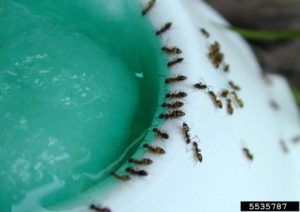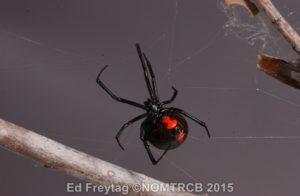Online Training Now Open
 If you need training, you know AgriLife Extension is here for you. However, sometimes our schedules don’t often mesh. Introducing the Texas Department of Agriculture approved online 6-hour school IPM coordinator training course. This course has been designed to aid anyone wanting to learn more about their school IPM program or need to fulfill the required training for all new school IPM coordinators.
If you need training, you know AgriLife Extension is here for you. However, sometimes our schedules don’t often mesh. Introducing the Texas Department of Agriculture approved online 6-hour school IPM coordinator training course. This course has been designed to aid anyone wanting to learn more about their school IPM program or need to fulfill the required training for all new school IPM coordinators.
There are six modules that are designed to educate about integrated pest management tactics in school settings as well as the legal requirements associated with the Texas School IPM Rules. Each section has knowledge based questions at the end, this is designed to aid the participant to take the final exam. While the in-person school IPM training does not require an exam, in order for our course meet TDA approval each online client will need to take a short quiz at the end and pass with a 75% score to receive a certificate of completion. The certificate will fulfill the requirement of successfully completing a Department-approved IPM Coordinator training course within six months of appointment or obtain at least six hours of Department-approved IPM continuing education units (CEU) every three years. The cost for this class is $45 and you don’t have to complete it in one day.
Other courses you can find at AgriLife Online Courses is one of great interest to many of our readers IPM for School Gardens 101. This free course is for school IPM coordinators, principals, teachers, and volunteers who support school gardens. This module explains the school IPM rules, as well as reminds teachers and volunteers that they cannot make pesticide applications on school property. Sign up at the Online Courses website to be the first to learn about new CEU classes as we add them.
Management Plans

odorous house ants feeding on liquid ant bait
The Texas School IPM Rules require that each school district as part of their IPM Program have many different requirements. However two areas that many school IPM coordinators struggle with is having a monitoring program to determine when pests are present and when pest problems are severe enough to justify corrective action and having a set of written guidelines that identify thresholds for when pest control actions are justified.
Over the summer I moved all of the IPM Action Plans to the the School IPM Website. While doing this I updated the plans and organized them so that coordinators and pest management professionals can use these documents as guides. Each action plan has the following sections: general information, identification, monitoring methods, suggested thresholds, non-chemical and chemical controls. Under the non-chemical section there is detail for sanitation, cultural, physical and mechanical controls. The IPM plans are designed to educate everyone on the best way to control each pest identified in the plan. For example, there are several ant management plans, since ants do not always react the same to certain control measures, these plans help to identify and manage the most common pests seen around TX schools.
Spiders on the Move
With the changing on the weather many of you will start to notice a spider or two. It is important to remember that there are many different species of spiders in Texas, but only the recluse and widow spiders have venom that is harmful to humans.

Black Widow spiders like to hide
There are several species capable of inflicting a harmful bite, but relatively few envenomations result in long-term injury. Spiders generally will not bite unless accidentally trapped against the skin or grabbed. Some species actively guard their egg sacs or young. Many spider species are too weak to puncture human skin. When envenomation does occur, mild reactions may include slight swelling, inflammation, burning or itching sensations lasting a few hours. Spiders of medical significance include widow spiders (Latrodectus spp.), recluse spiders (Loxosceles spp.) and yellow sac spiders (Cheiracanthium spp.).
Spiders are often implicated by medical professionals when patients present skin lesions. However, a US study showed that of 600 cases of suspected spider bites, approximately 80% were not caused by spiders. Very few fatalities occur, usually fewer than three annually. Widow spiders have a neurotoxin in their venom, which is potentially lethal.
Dr. Merchant wrote a post a few years ago about Wolf Spiders: Never more than 5 feet from a (wolf) spider is a short read for everyone living in the south on what spiders to expect if you live in the area. You can also find the IPM Action Plan for Spiders as well on the website.

 .
.